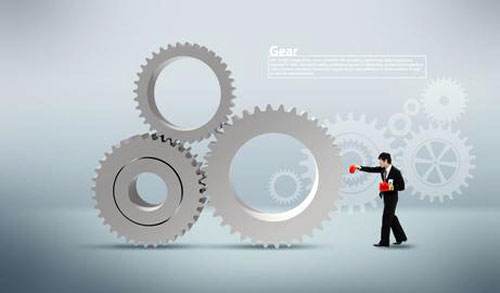
当前课程知识点:History of Western Civilization 全英文西方文明史 > Chapter 3 Ancient Civilization 1 > 3.3 Mid-Republic > 3.3.1 Text
返回《History of Western Civilization 全英文西方文明史》慕课在线视频课程列表
3.3 Mid-Republic 264 BC to 146 BC
Hi everyone, this is the third part of the Chapter Three, Mid-Republic, from 264 BC to 146 BC
First we will talk about The Punic Wars
1. The Punic Wars were a series of three wars fought between Roman Republic and Carthage from 264 BC to 146 BC. They were called the Punic Wars because Latin term for Carthaginian was Punic, with reference to the Carthaginians' Phoenician ancestry. Carthage was a city-state founded by Phoenicians in 814 BC. Phoenicians were people of Phoenicia, a maritime country or a collection of city states at eastern end of the Mediterranean. During the 7th to 3rd centuries BC, Carthage first became independent and gradually grew into a powerful Empire.
2. We can see from this map. In 264 BC the Carthaginian Empire extended over much of the coast of North Africa and southern Spain and also you can see the island Corsica, Sardinia, and most of Sicily.
3. We can see the territory change of the Punic Wars from this map
4. The first Punic War. After conquering the Greek cities in the south of the Italian peninsular, the Romans invaded Sicily in 265BC. Next year the first Punic War started. Carthage was a sea power, Roman was a land power. But Romans learned fast. They took a wrecked Carthaginian ship as a model and within two months, the Romans had a fleet of over one hundred warships. Roman engineers invented gangplanks something like a bridge could be dropped onto the enemy’s ship with a sharp spike to link the two ships together, thus the Romans infantrymen could fight like on the land. In 241BC the defeated Carthaginian commander Hamilcar Barca surrendered and paid a huge indemnity to Romans. Indemnity is a sum of money paid by the loser of the war.
5. The second Punic War.
After the first war, Carthage began the expansion of territory in Spain; this was thought to be a threat to Romans. In 218BC a new Carthaginian general, Hamilcar Barca’ son Hannibal Barca lunched the second Punic War.
6. Hannibal was considered one of the greatest military commanders in history. Look at his epic march. He led the 23,000 Carthaginian troops and 18 war elephants started from Spain, marched to the east along the north Mediterranean coast, across the Alps, and reached the Po valley. He attacked the Romans from the north. Romans lost battles one after another.
7. In 217 the Roman Senate named a great general Quintus Fabius Maximus a dictator. Fabius successfully used delaying tactics to slow down the enemy’s campaign. He was regarded as the originator of many tactics used in guerrilla warfare. From this painting we can see Hannibal’s great epic. You can see the troops and elephants. In 211BC a 25 years old young commander Scipio the Elder, led a new army to attack Spain. In the rise of Roman Empire, the Greek historian Polybius recorded before the Roman army entered the city of New Carthage, Scipio ordered:” to exterminate every form of life you will encounter, sparing none”. Scipio later sailed to Africa and this drew Hannibal back home. Finally in 202 at the final battle at Zama the Carthaginian army was destroyed.
8. The third Punic War
Romans wanted a total destruction of Carthage. Cato the Elder was an ex-council and now a senator, all his speeches ended by a striking sentence: "And I also think that Carthage must be destroyed". In 146, the adopted grandson of Scipio the Elder, Scipio the Younger, totally destroyed Carthage after a three-year siege. The city was burned for 17 days, 50,000 survivors were sold into slavery.
9. look at this map, in the same year the Battle of Corinth marked the conquest of Greek mainland by the Roman Republic; by 146 BC the Romans not only conquered Carthage, it also conquered Macedonian and Greece mainland, Spain and southern Gaul. It was an Empire now across the whole Mediterranean area.
10. The successful Roman expansion depends on their powerful military force. The largest unit of the Roman army is legion, soldiers in the legion called legionaries. In the beginning of the Roman Republic there were two separate legions of 5,000 men each. each one commanded by one of the two consuls. In 494 BC, when foreign threats emerged, ten legions were raised. To the end of the Republic, there were about 20 legions.
11. In the middle of the Republic, legions were composed of cavalry and infantry.
Cavalry called Equites, they fought on horseback, sometimes called "knights" in modern times. They were the elites of the army. Equites were recruited exclusively from the patricians; their equipment was purchased by themselves, consisted of a round shield, helmet, body armor, sword and one or more long spear called lances. Heavy infantry was the principal unit of the legion, composed of citizens could afford the equipment of an iron helmet, shield, armor and a heavy long spear called javelin. Light infantry were mainly poorer citizens who could not afford to equip themselves properly.
12. Roman religion
The ancient Romans were highly religious. For Romans, religion was a part of daily life. Every man and woman has their own god; each family had a household shrine to worship their own deity. A deity is a god or goddess. Religion is also a state affair. There was no separation of church and state at that time. A citizen who was elected public officials might also serve as a priest. Priests could marry and raise a family.
We mentioned before the Greeks adopted the Phoenician alphabet, Roman language the Latin alphabet adopted the Etruscan and Greek alphabets. The Greek religion also influenced the Romans. The god of all gods was Jupiter, the Greek god Zeus. This relief shows romans are sacrificing at the Temple of Jupiter
Roman god of war Mars was Ares in Greece, he was regarded as the ancestor of the Roman people. As the military gods Mars was second in importance only to Jupiter. And in Rome Greek goddess Hera became Juno, and
13. Aphrodite became Venus. This statue called "Venus in a bikini", from Pompeii. She is untying her sandal, with a small Eros squatting beneath her left arm. Eros is the son of Aphrodite, god of sexual attraction. The word “erotic”, meaning sexual feelings or desire came from this god. His Roman name was Cupid, means "desire".
14. Romans also have their own gods, like the ancestor of Romans Aeneas, a Trojan hero, son of Venus and the goddess of love. The founders of Rome Romulus and Remus were also worshiped; they are sons of the Mars, god of war. This is Janus, the Roman god of gates, time, doorways, beginnings and endings. He has two faces, since he can look to the future and to the past at the same time. The name of the first month January came from him, but others thought it was from Juno, the wife of Jupiter.
15. The Roman triumph was a ceremony to celebrate the success of a military commander who had led Roman army to victory. This is the day for a man of triumph. The victorious commander received the highest honor. He was close to being "king for a day". He dressed like a god, his face pointed red like god. In a four-horse chariot, he drove across the city. Before him the spoils and captives of his victory, his armies followed behind. At Jupiter's temple on the Capitoline Hill, he sacrificed two white oxen to Jupiter and laid tokens of his victory at Jupiter's feet.
16. Key words from this part: The Punic Wars, Hannibal, Scipio the Elder, Scipio the Younger, The Roman triumph
This is the end of the third part
返回《History of Western Civilization 全英文西方文明史》慕课在线视频列表
-1.0 Introduction
--1.0.3 Exercises
-1.1 Greek Bronze Age and Dark Age
--1.1.3 Exercises
-1.2 Greek Gods
--1.2.3 Exercises
-1.3 Archaic Greece
--1.3.3 Exercises
-1.4 Athens and the Persian Wars
--1.4.3 Exercises
-1.5 Discussion
-2.1 War and politics in the fifth century BC
--2.1.3 Exercises
-2.2 Greece in the fourth century BC
--2.2.3 Exercises
-2.3 Classical Greek Philosophy
--2.3.3 Exercises
-2.4 Athenian Drama
--2.4.3 Exercises
-2.5 Alexander the Great and Hellenistic World
--2.5.3 Exercises
-2.6 Discussion
-3.1 Roman Kingdom
--3.1.3 Exercises
-3.2 Early Republic
--3.2.3 Exercises
-3.3 Mid-Republic
--3.3.3 Exercises
-3.4 Late-Republic
--3.4.3 Exercises
-3.5 End of the Republic
--3.5.3 Exercises
-3.6 Discussion
-4.1 Pax Romana 1
--4.1.3 Excecises
-4.2 Pax Romana 2
--4.2.3 Excecises
-4.3 Crisis of the Third Century and Constantine
--4.3.3 Excecises
-4.4 The Victory of Christianity
--4.4.3 Exercises
-4.5 The Fall of the Roman Empire
--4.5.3 Exercises
-4.6 Discussion
-5.1 Early Middle Ages
--5.1.3 Excecises
-5.2 Carolingian Dynasty
--5.2.3 Excecises
-5.3 High Middle Ages
--5.3.3 Excecises
-5.4 Late Middle Ages 1
--5.4.1 Excecises
-5.5 Late Middle Ages 2
--5.5.3 Excecises
-5.6 Discussion
-6.1 The Renaissance
--6.1.3 Exercises
-6.2 Protestant Reformation
--6.2.3 Exercises
-6.3 Italian Wars and Rise of Russia
--6.3.3 Exercises
-6.4 Age of Discovery
--6.4.3 Exercises
-6.5 French War of Religion and Russia’s Time of Trouble
--6.5.3 Exercises
-6.6 Discussion
-7.1 The Thirty Years War
--7.1.3 Exercises
-7.2 English Revolution
--7.2.3 Exercises
-7.3 Three Absolute Monarchs
--7.3.3 Exercises
-7.4 Dutch Golden Age
--7.4.3 Exercises
-7.5 Science and Culture in the 17th Century
--7.5 Text
--7.5.3 Exercises
-7.6 Discussion
-8.1 The United Kingdom
--8.1.3 Exercises
-8.2 The American Revolution
--8.2.3 Exercises
-8.3 The French Revolution
--8.3.3 Exercises
-8.4 Age of Enlightenment
--8.4.3 Exercises
-8.5 West after the 18th century
--8.5.3 Exercises
-8.6 Discussion


